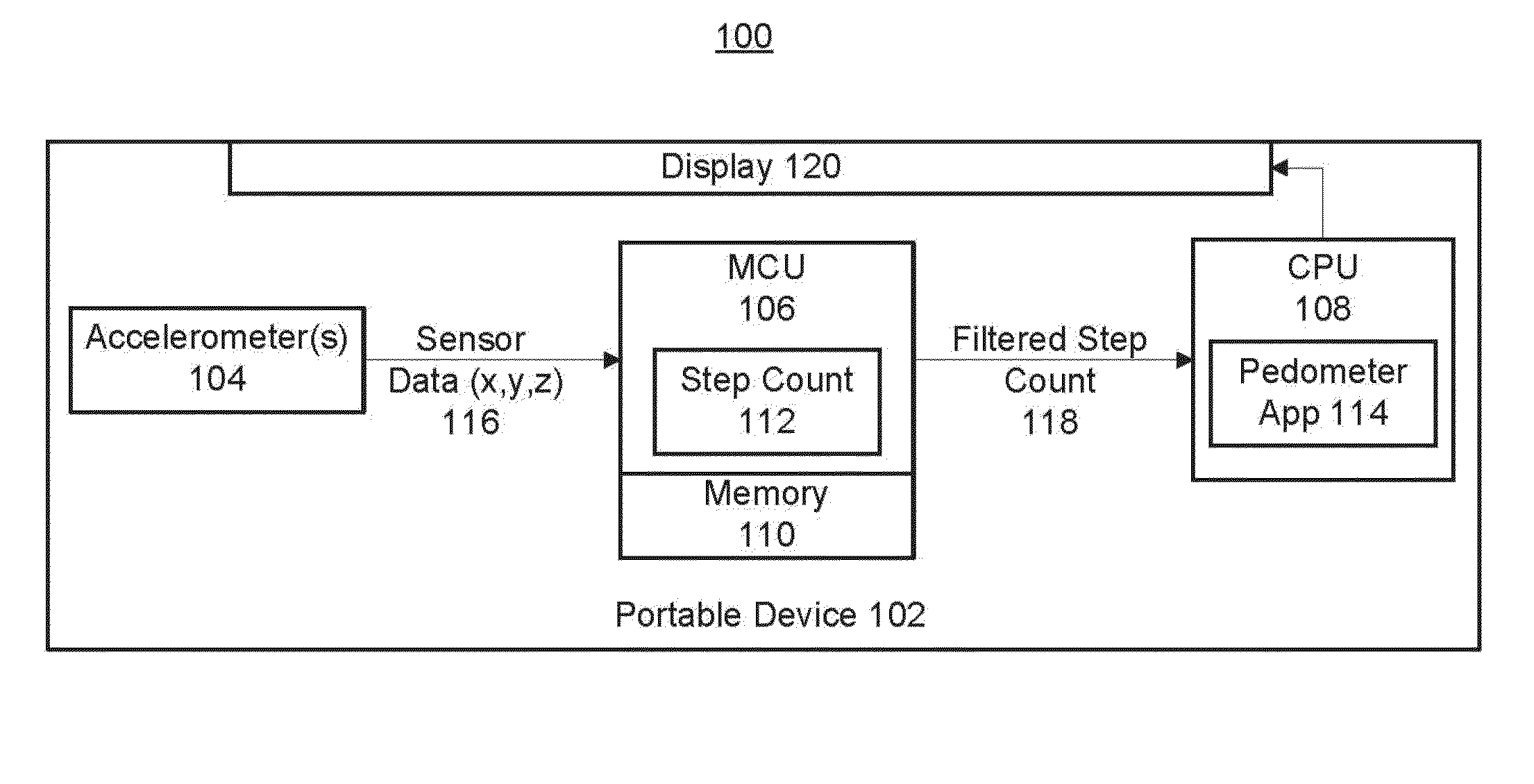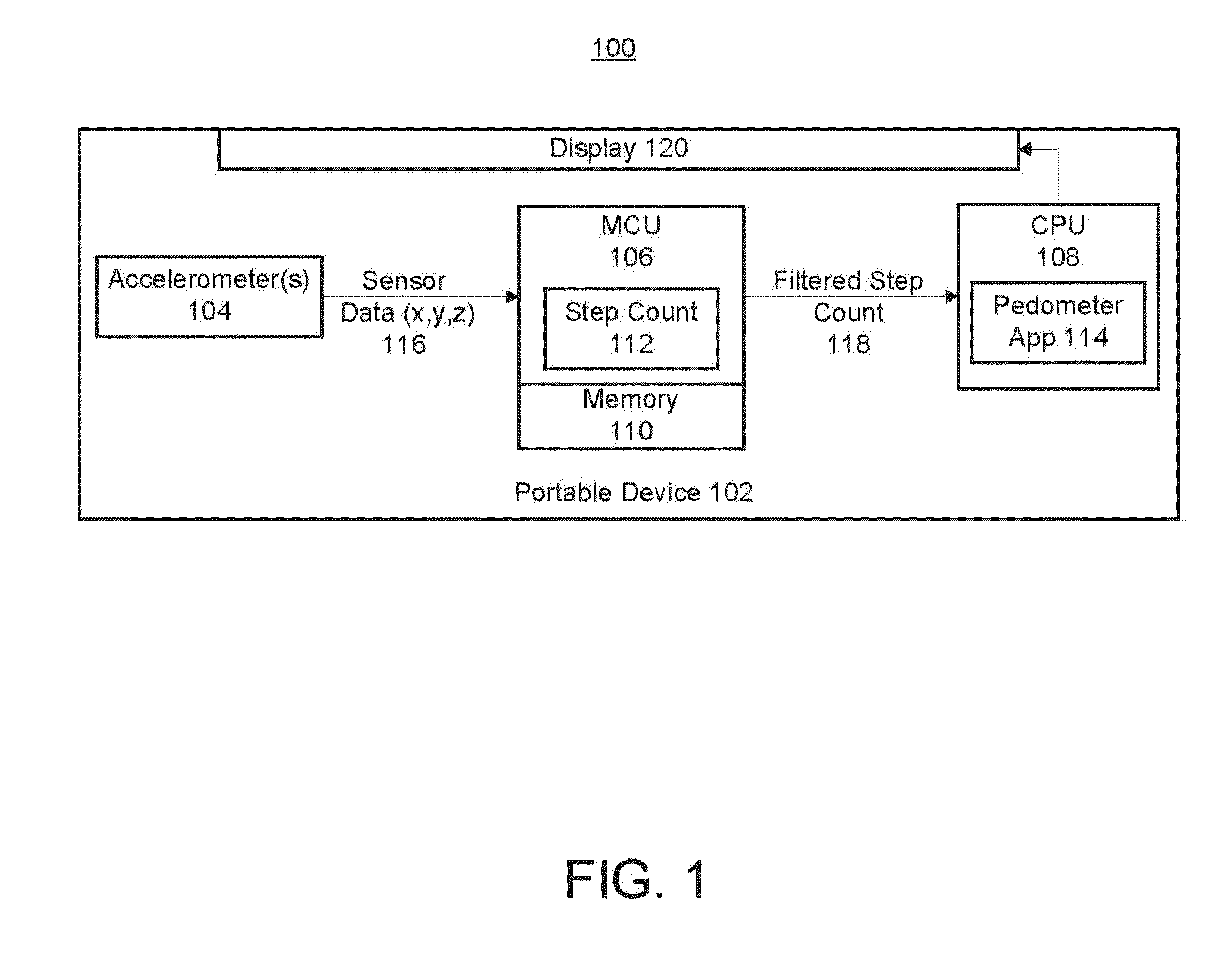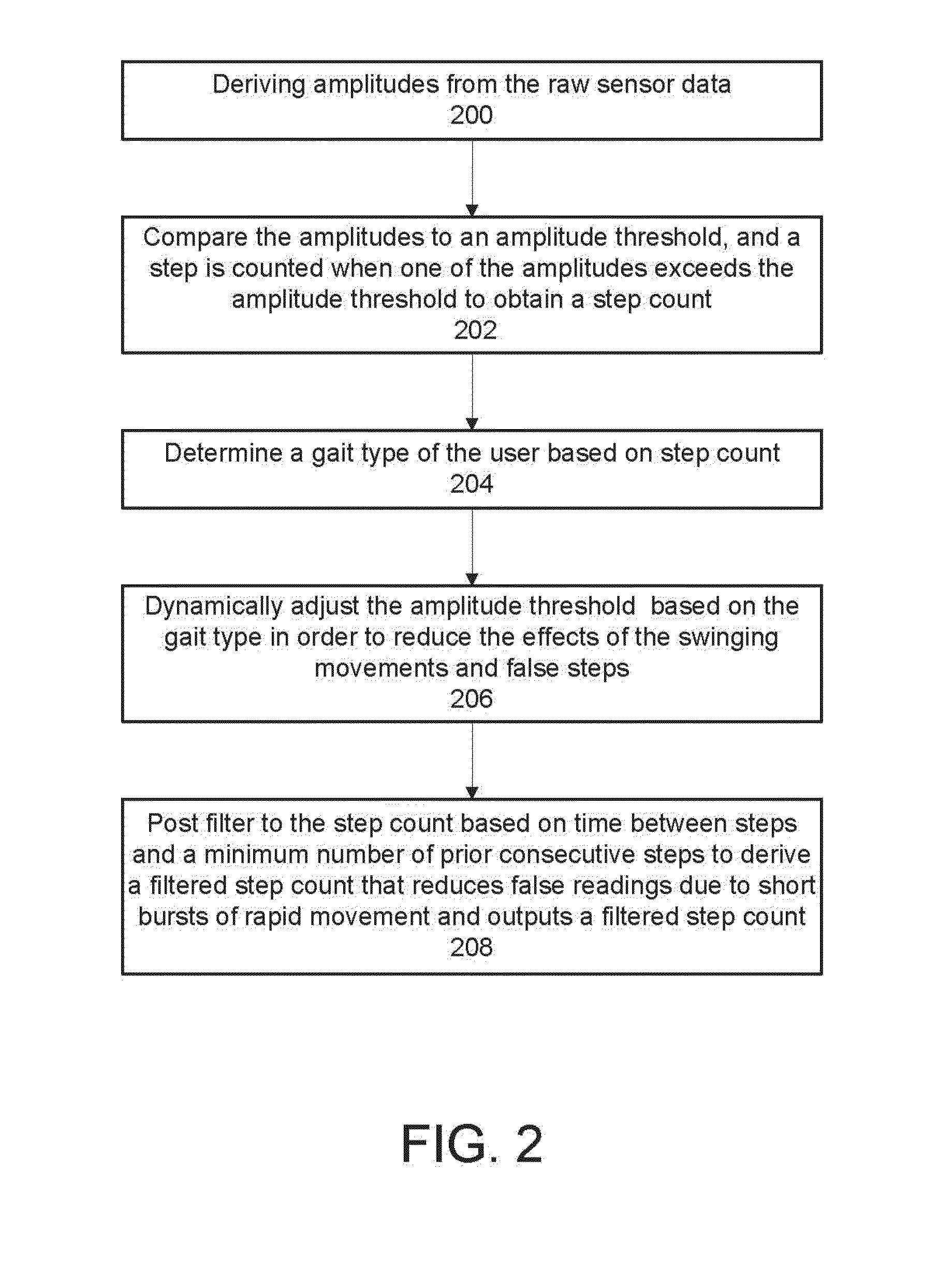Pedometer in a low-power device
a low-power device and pedometer technology, applied in the field of pedometers in low-power devices, can solve the problems of inaccurate step count, computationally expensive calculations in terms of time and processor power, etc., and achieve the effect of reducing the effect of swinging movements and false readings
- Summary
- Abstract
- Description
- Claims
- Application Information
AI Technical Summary
Benefits of technology
Problems solved by technology
Method used
Image
Examples
Embodiment Construction
[0015]The present invention relates to improved methods and systems determining a user's steps. The following description is presented to enable one of ordinary skill in the art to make and use the invention and is provided in the context of a patent application and its requirements. Various modifications to the embodiments and the generic principles and features described herein can be made. Thus, the present invention is not intended to be limited to the embodiments shown, but is to be accorded the widest scope consistent with the principles and features described herein.
[0016]In the following description, for purposes of explanation, numerous details are set forth in order to provide a thorough understanding of various embodiments. It is important to note that the invention can be practiced without all of these details. Reference in this specification to “one embodiment” or “an embodiment” means that a particular feature, structure, or characteristic described in connection with ...
PUM
 Login to View More
Login to View More Abstract
Description
Claims
Application Information
 Login to View More
Login to View More - R&D
- Intellectual Property
- Life Sciences
- Materials
- Tech Scout
- Unparalleled Data Quality
- Higher Quality Content
- 60% Fewer Hallucinations
Browse by: Latest US Patents, China's latest patents, Technical Efficacy Thesaurus, Application Domain, Technology Topic, Popular Technical Reports.
© 2025 PatSnap. All rights reserved.Legal|Privacy policy|Modern Slavery Act Transparency Statement|Sitemap|About US| Contact US: help@patsnap.com



